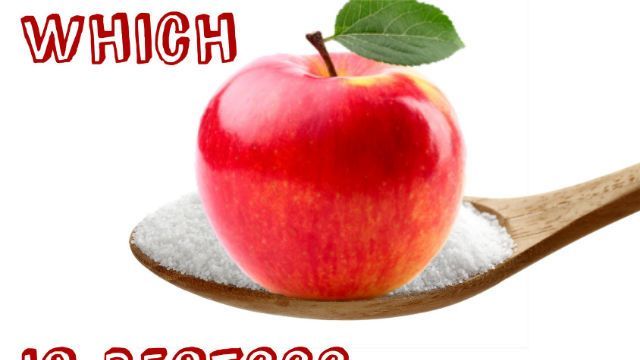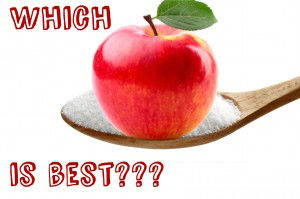
You may have heard that natural fruit sugar is far healthier than table sugar (sucrose). The answer to that is a bit more complicated than it seems.
The sugar found in fruit and the sugar found in that bowl of shiny white grains on your table are molecularly and chemically the same. Both are comprised of fructose and glucose molecules. The ratios are slightly different with fruit sugar weighing in at about 40 to 55 percent fructose depending on the fruit while sucrose is an even 50/50 distribution.
The primary difference between fructose and glucose is how they are broken down by the body. Fructose digestion is the sole responsibility of the liver, meaning an insulin response is never activated. Glucose, however, is broken down in the stomach, prompting a quick insulin rush.
Yet if both fruit sugar and table sugar are so chemically similar, why do we praise one and scorn the other? The reason is because fruit is loaded with a slew of other nutrients. For example, phenols are compounds that provide potent antioxidant capabilities. Stone fruits, or fruits with a central pit such as peaches, plums and apricots, are known for their high phenol content.
Berries, specifically blueberries, are among the highest antioxidant-rich fruits available thanks to their deep pigments. So while fruits tend to be higher in sugar than vegetables, the other compounds present work synergistically to provide the body with disease and inflammation fighting capabilities.
Of course, we shouldn’t forget to mention the fiber content in fruit compared to table sugar. Sugar is nutritionally void of any other nutrient, including fiber. The fiber found in fruit helps offset the insulin response.
Even the highest-sugar fruits, the dried variety, still provide beneficial fiber. Table sugar’s total lack of any other nutrient results in a quick burst of insulin production, followed by a “crash” not long after.
Table sugar is literally pure sugar and is what dieticians will refer to as “added sugar.” Anytime table sugar is utilized in a recipe, it is added to any natural sugars already found among the other ingredients. For example, a cup of apple slices contains about 11g of natural sugar whereas a cup of applesauce contains 22g.
To say one is “healthier” than the other from a molecular standpoint is false as they are practically the same compositionally. However, the means in which we consume them makes all the difference.
Dieticians suggest avoiding any added sugars, many of which are disguised using a slew of different names. Molasses, corn syrup, malt syrup, maltose and brown sugar are all added sugars providing no added benefit over another.
 Many believe brown sugar is healthier than white sugar. While this holds true in terms of rice where brown rice maintains natural nutrients, the concept doesn’t transfer in the sugar realm. Brown sugar is nothing more than white sugar colored with molasses.
Many believe brown sugar is healthier than white sugar. While this holds true in terms of rice where brown rice maintains natural nutrients, the concept doesn’t transfer in the sugar realm. Brown sugar is nothing more than white sugar colored with molasses.
It’s important to keep in mind that all sugar, whether from a fruit or a packet, contains nine calories per gram. Fruits will provide you with numerous other disease-fighting compounds and plentiful fiber whereas added sugars will supply you only with added pounds around your waistline.
-The Alternative Daily
Sources:
http://www.huffingtonpost.com/2013/06/29/fruit-sugar-versus-white-sugar_n_3497795.html
http://www.fruitsandveggiesmorematters.org/sugar-in-fruit-vs-table-sugar
http://charlotte.cbslocal.com/2013/07/02/the-difference-between-consuming-natural-sugar-vs-white-sugar
http://foodreference.about.com/od/Sweeteners/a/What-Is-Brown-Sugar.htm
http://www.sugarstacks.com/fruits.htm

